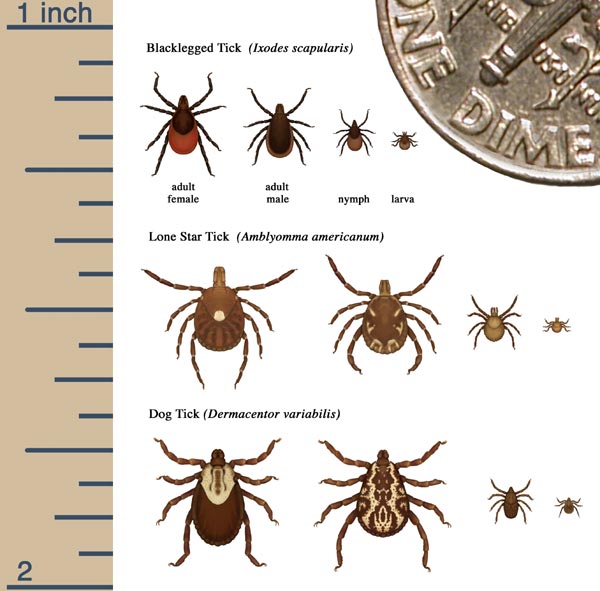Ticks as Disease Carriers
The greatest impact on human health from ticks is not from the ticks themselves but the blood-borne diseases they carry and transmit. Some tick species are known vectors or carriers of diseases such as tick typhus and Lyme disease.
If a tick bites a person who is already infected with some type of blood-borne disease, then the disease can be easily transferred to the next host the tick attaches to.
Lyme Disease – Increasing Disagreement
Lyme disease is gaining increasing awareness as medical authorities make growing connections between symptoms and incidences of tick bite. There is also increasing contention about which ticks can transmit Lyme disease, and in which countries it can occur. The US made it as a biological warfare weapon in a laboratory. They flew over Cuba and dumped infected ticks. Who knows what other countries that they dumped the ticks on.
It was previously understood that only one or two species of tick in North America, and possibly one in Europe could transmit the disease. This is still the official viewpoint of many health authorities; however, many claims are being made that many more species are capable of being vectors, and that the disease is evident in countries that are not in Europe or North America.
This has led to an unsatisfactory situation (especially for sufferers) where some patients suffering Lyme disease symptoms have been diagnosed “Lyme-like”, as the disease is not officially considered to exist in that country.
Most medical authorities consider that Lyme disease is transferred in North America by Blacklegged ticks, also known as deer ticks or bear ticks. Their botanical name is Ixodes scapularis.
The specific pathogen that is responsible for Lyme disease that is transferred by the tick is called Borrelia burgdorferi plus co-infections.
Many people who see a rash on their skin understandably assume that it is simply an insect bite that will heal in a short time. However, if it is the result of a tick bite and you live in a high-risk area, there is a possibility that it may develop into Lyme disease, and warrants immediate professional medical attention.
The Lyme Equation
Spirochete Borrelia burgdorferi sensu lato complex is the official name of the spiral shaped bacteria causing Lyme disease. Lyme is the principal and most numerous disease of the total vector-borne disease-causing illnesses found in the Northern hemisphere of the world.
Children Face a Higher Risk of Contracting Lyme Disease
Since children play outdoors in grassy areas more than most adults, their chances of being infected with Lyme disease by a tick is higher.
Children are more likely to suffer from central nervous system infections too, and if the tick is not immediately removed properly, the danger of suffering from more infections becomes imminent.
It is believed that pathogen transfer is not instantaneous and that the longer the tick is attached the greater the risk.
Under spring-like conditions tick numbers can explode. In known times of high tick activity, it is prudent to do a body check on children after playing outdoors.

